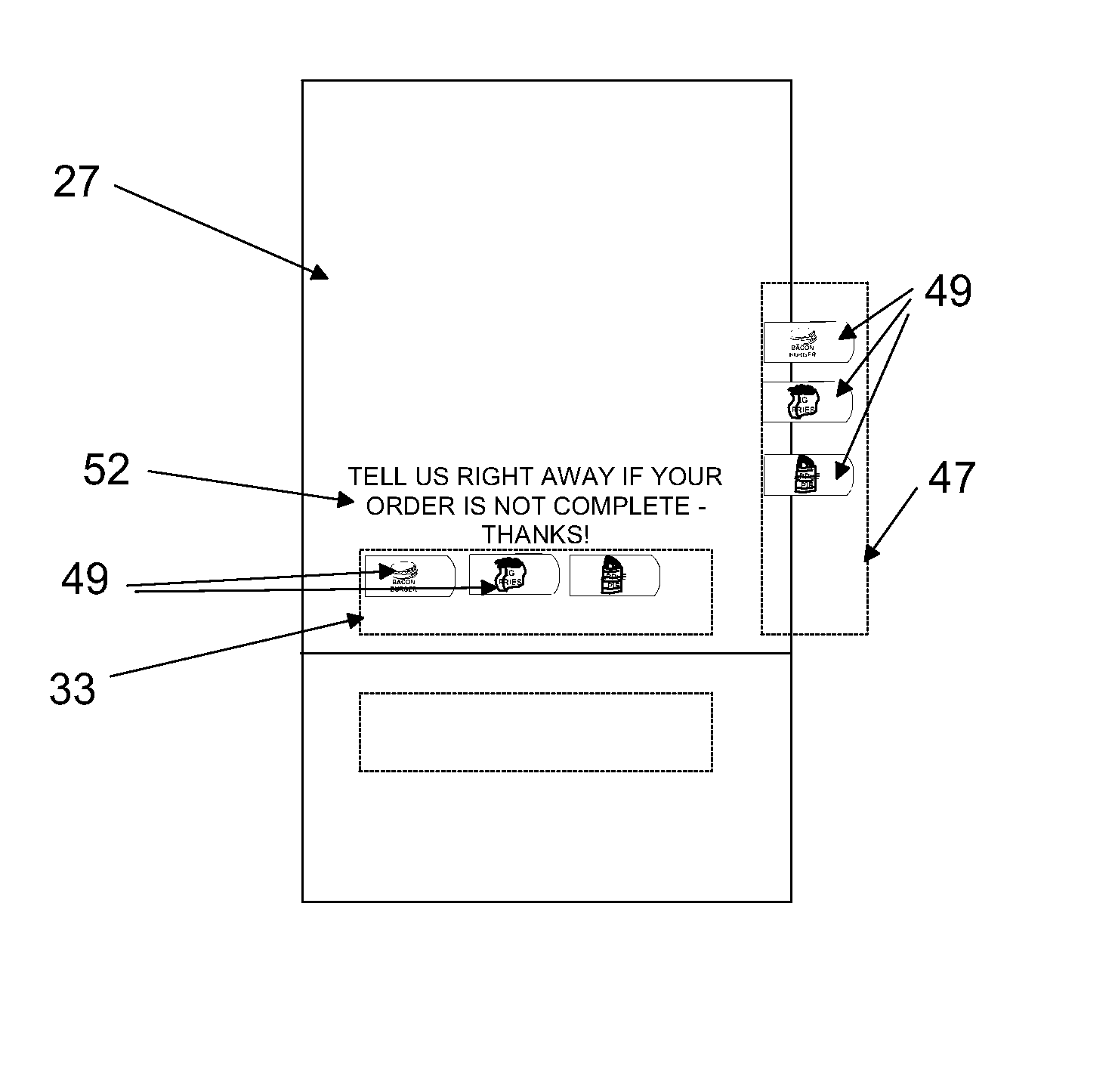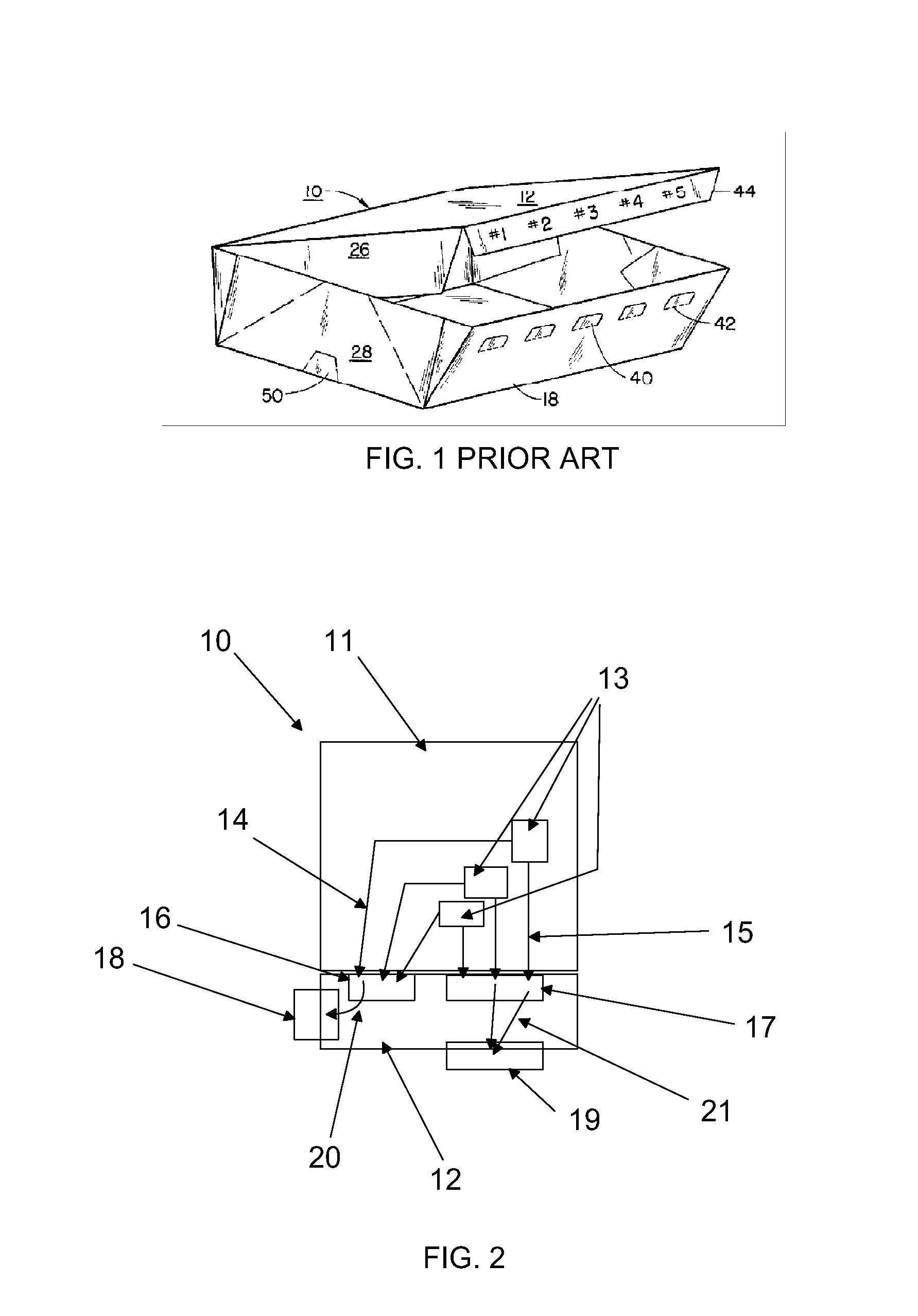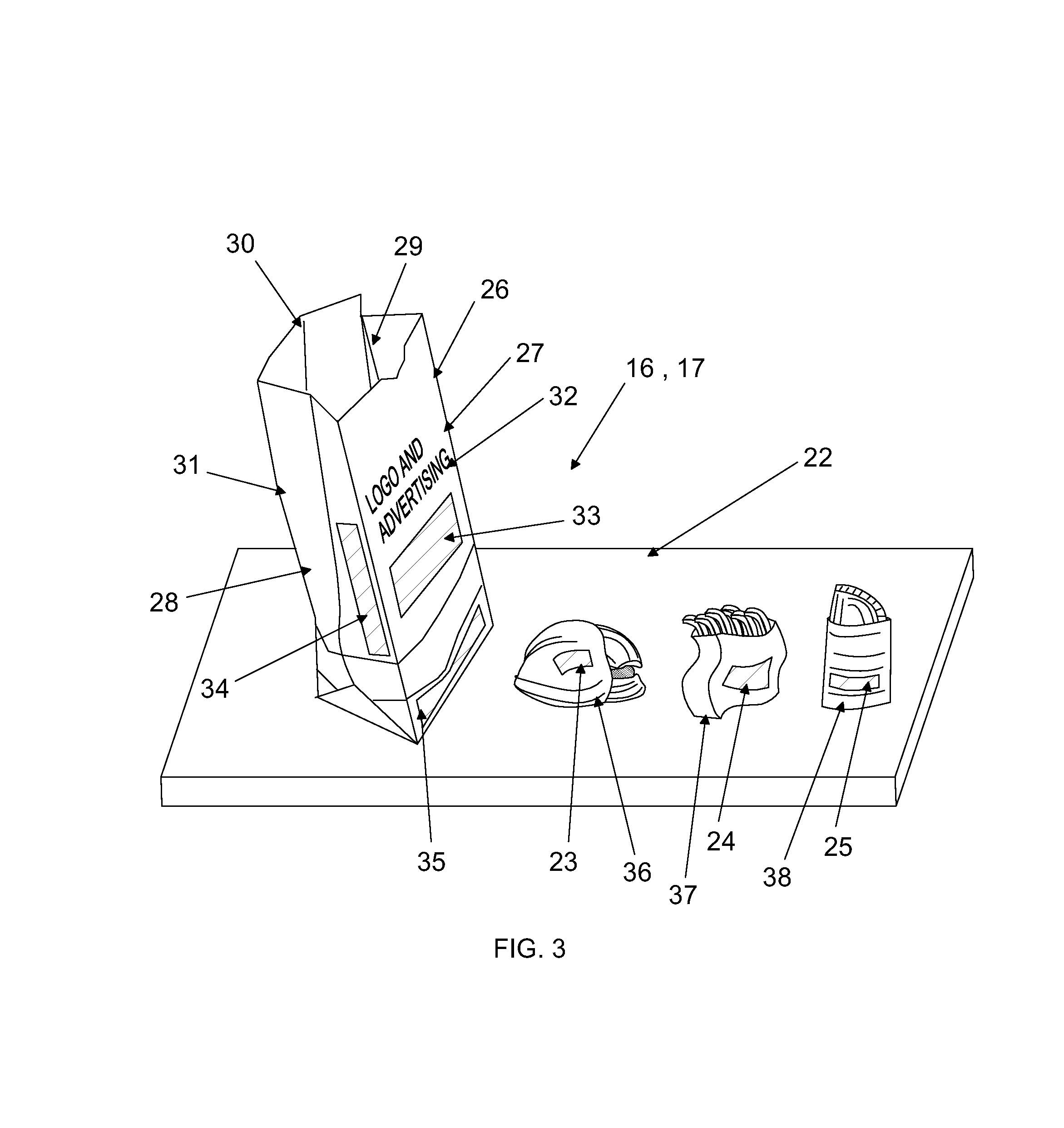Customer order and billables confirmation method
- Summary
- Abstract
- Description
- Claims
- Application Information
AI Technical Summary
Benefits of technology
Problems solved by technology
Method used
Image
Examples
first embodiment
[0042]In practice, as staff withdraw from the edge of the sterile field bearing empty packaging of disposable 70, that staff will remove the pull off portion of label 75 and adhesively attach it to a surface where a later cumulative accounting of medical disposables can be made. In a first embodiment after the surgical procedure, a staff person can transfer the information of the disposables 70 used in the procedure by examining the pull off portions of labels 70 which have been attached to a board, table surface, wall, clipboard or other such device.
second embodiment
[0043]In a second embodiment, each bar code of each label 75 is capable be read by a bar code scanner or reader and is associated with a unique alphanumeric code representing only the individual item 73 of a single disposables 70. The process of used disposables accounting is shown in FIG. 16, where a pull off portion of label 75 is shown scanned by bar code scanner 78, whereupon signals representing that bar code are transmitted to a computer or computer network 79 and stored there. A control program of the network 79 acts to identify as disposable items used in the surgery with the received unique alphanumeric codes to prepare an output which indicates the specifications of and number of disposable items used during a surgical procedure.
[0044]It would be preferable to prevent early removal of the pull off portion of label 75 so that staff was not inclined to do so in anticipation of the use of some disposables. If those disposables were not actually used but their labels' presence...
PUM
 Login to View More
Login to View More Abstract
Description
Claims
Application Information
 Login to View More
Login to View More - R&D
- Intellectual Property
- Life Sciences
- Materials
- Tech Scout
- Unparalleled Data Quality
- Higher Quality Content
- 60% Fewer Hallucinations
Browse by: Latest US Patents, China's latest patents, Technical Efficacy Thesaurus, Application Domain, Technology Topic, Popular Technical Reports.
© 2025 PatSnap. All rights reserved.Legal|Privacy policy|Modern Slavery Act Transparency Statement|Sitemap|About US| Contact US: help@patsnap.com



